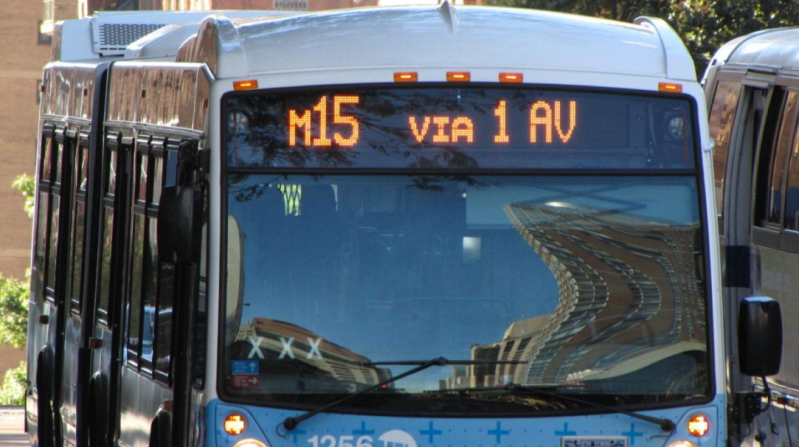Bus Lanes Alone Aren’t Enough to Give NYC Buses a Clear Path

This short video makes a compelling case to turn 14th Street into a car-free transit priority route when the L train shuts down. Regular bus lanes on a street shared with cars won’t be enough.
Judging by this time-lapse shot by the folks at TransitCenter during a recent rush hour on Second Avenue, New York City bus lanes are still de facto drop-off and delivery zones. Watch this M15 driver opt to avoid the bus lane on every single block thanks to vehicles illegally occupying the bus lane:
Riding Select Bus on 2nd Avenue is a mostly out-of-bus-lane experience pic.twitter.com/nlIfZsVe20
— TransitCenter (@TransitCenter) January 19, 2017
The M15 is one of 11 Select Bus Service lines with dedicated lanes enforced with cameras. The bus lanes make a difference — the M15 moves 11 percent faster than it did before — but they aren’t providing a real unobstructed path.
One factor at work may be that DOT and the MTA no longer use bus-mounted cameras. Instead, the cameras are mounted on street poles, so drivers may have figured out where they can park and avoid detection.
Then there’s the city’s Stipulated Fine Program, which essentially forgives many of the parking tickets racked up by large freight companies. The arrangement creates a gigantic disincentive for the companies to adhere to parking and loading rules.
The biggest shortcoming of NYC bus lanes, however, is that they are so easy to park in. A physical barrier would keep other vehicles from intruding. On First and Second avenues, this would entail setting aside two lanes for a busway (one for locals, one for expresses) as well as median space for waiting areas:

On a two-way street like 14th, the only way to go is to boot cars off and reserve the whole right-of-way for buses, biking, and walking:

